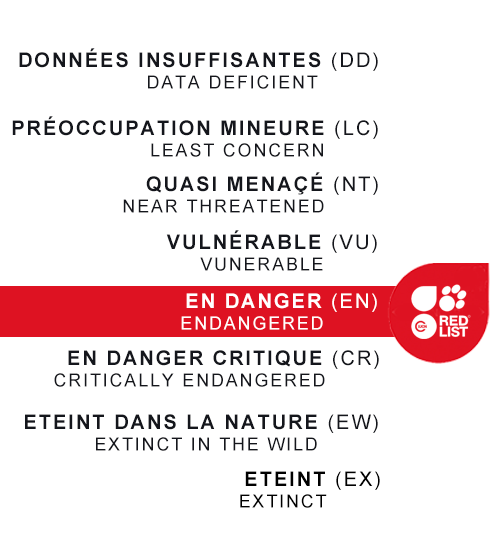Northern Bald Ibis

Northern Bald Ibis

-
Class
Aves -
Order
Pelecaniformes -
Familly
Threskiornithidae
-
 70-80cm
70-80cm -
 1.5kg
1.5kg -
 24-28 days
24-28 days -
 2-4 eggs
2-4 eggs -
 up to 25 years
up to 25 years
-
Diet
omnivorous (insects, small vertebrates, berries, aquatic plants) -
Habitat
arid and semi-arid rocky areas and plains -
Range
Morocco -
 This species is part of a European Breeding Program
This species is part of a European Breeding Program
-
Population in the wild
Stable -
IUCN REDLIST status


The Northern Bald Ibis has black plumage with metallic blue, green and purple highlights on its wings. It owes its name to its featherless head and its partly bare neck. The long, curved beak is perfect to search for preys in cracks in dry ground or crevices in rocks.
It lives in large flocks that can gather up to a hundred individuals and are usually situated in rocky areas or cliffs located near the banks of rivers or on the coast.
Northern Bald Ibises feed on any available prey (insects, spiders, scorpions, earthworms, snails, fish, amphibians, lizards, small rodents, etc.) on dry ground, rocky slopes and wetlands. They also feed on vegetation (berries, duckweed, rhizomes of aquatic plants) and frequent fields and meadows during the non-breeding season.
Nest building starts in February. The female lays between 2 to 4 eggs between March and April. Eggs are incubated for 24 to 28 days and fledging generally takes about 40 to 50 days to occur. The chicks reach sexual maturity at around 3 years of age.
Once widespread from northern Africa to the Middle East and across much of Europe, the Northern Bald Ibis population has suffered a spectacular decline over the centuries. The species disappeared from Europe over 400 years ago and now only survives in the wild in Morocco, with the last remaining population in Syria presumed to be almost extinct.
The causes of its decline are multiple: poaching, habitat degradation and destruction due to the expansion of agriculture and the development of infrastructure, poisoning linked to the use of pesticides, scarcity of food sources, etc.






